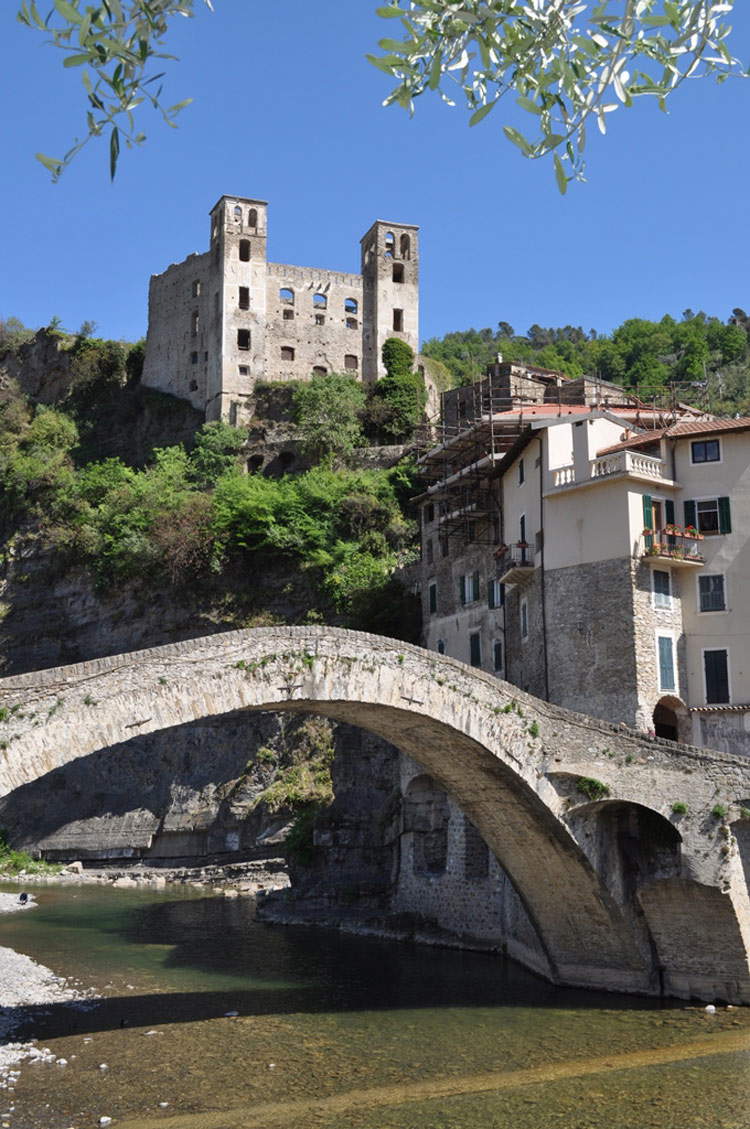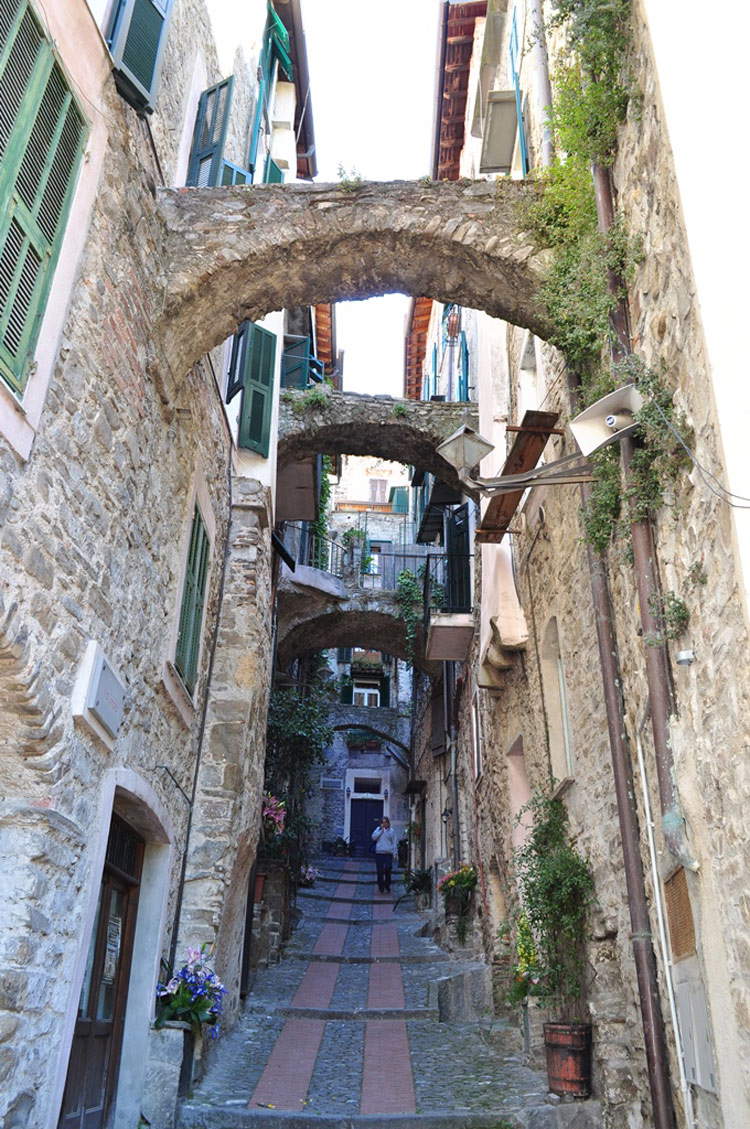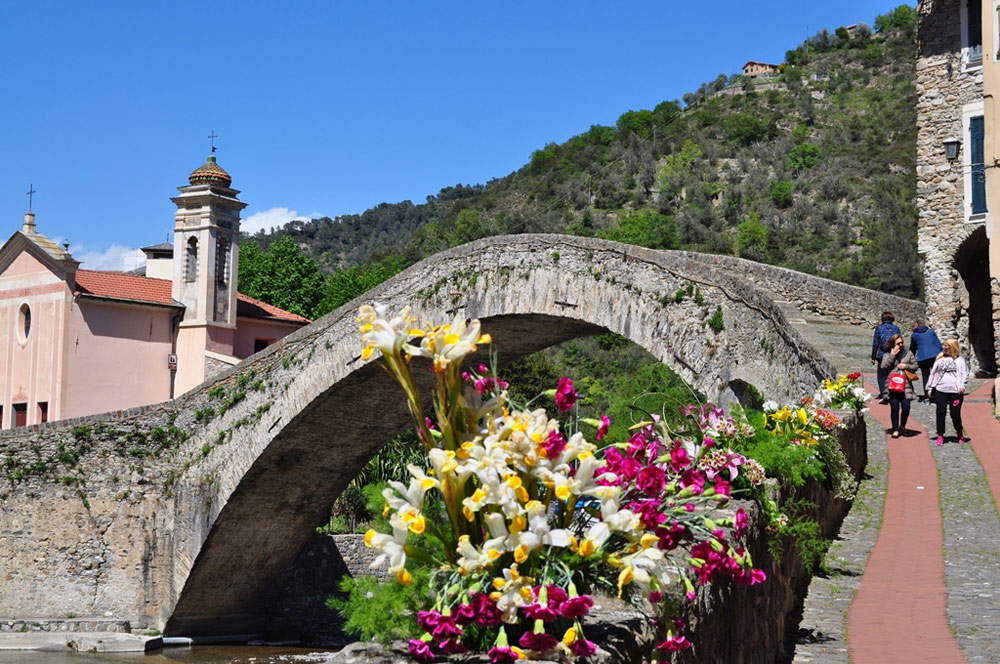Dolceacqua: like a painting by Monet
What does the great French painter Monet, an exponent of Impressionism, have to do with a quiet village in the Ligurian hinterland? It is a story as simple as it is fascinating, I will tell you in brief.
Dolceacqua is a village in the province of Imperia, a few kilometers from the sea, built on a rocky spur in the valley of the Nervia stream. A mighty castle was erected on the rocky outcrop, sloping down at its foot the dwellings. To climb to the top of the mountain a network of carruggi, ladders, and winding passages made the fortress impregnable. Thus was formed the neighborhood called terra dall’aspetto typically Ligurian and still medieval. The castle soon became lapped stronghold of the Dorias, in a position to control the valley and trade between the sea and the Piedmont plains to the north. Because of this, the village grew and developed to such an extent that the urban dimensions had to expand beyond the stream, giving rise to a whole new neighborhood.
 |
| The village of Dolceacqua |
 |
| The carruggi |
In order to connect the two banks a stone bridge had already been erected, with the so-called dasino back shape, and it was precisely this bridge that was for many centuries the only access to the ancient nucleus of the town. The bridge therefore acquired a definite symbolic as well as functional role.
It was only in the nineteenth century, however, that the bridge acquired an international echo, when Monet, during his stay in Liguria, fascinated by the sinuous forms of the bridge, decided to immortalize it in one of his paintings and in a subsequent one and in yet another. From that moment Dolceacqua, like the cycle of Cathedrals and Water Lilies, had its portrait on canvas.
Even today approaching the township and pausing just before entering the pedestrian bridge, one is still fascinated by that view, with the urban fabric clinging to the foot of the castle ruins and there below with its slender arched shape the bridge, Monet’s bridge.
 |
| The castle |
 |
| The bridge |
Warning: the translation into English of the original Italian article was created using automatic tools. We undertake to review all articles, but we do not guarantee the total absence of inaccuracies in the translation due to the program. You can find the original by clicking on the ITA button. If you find any mistake,please contact us.





























